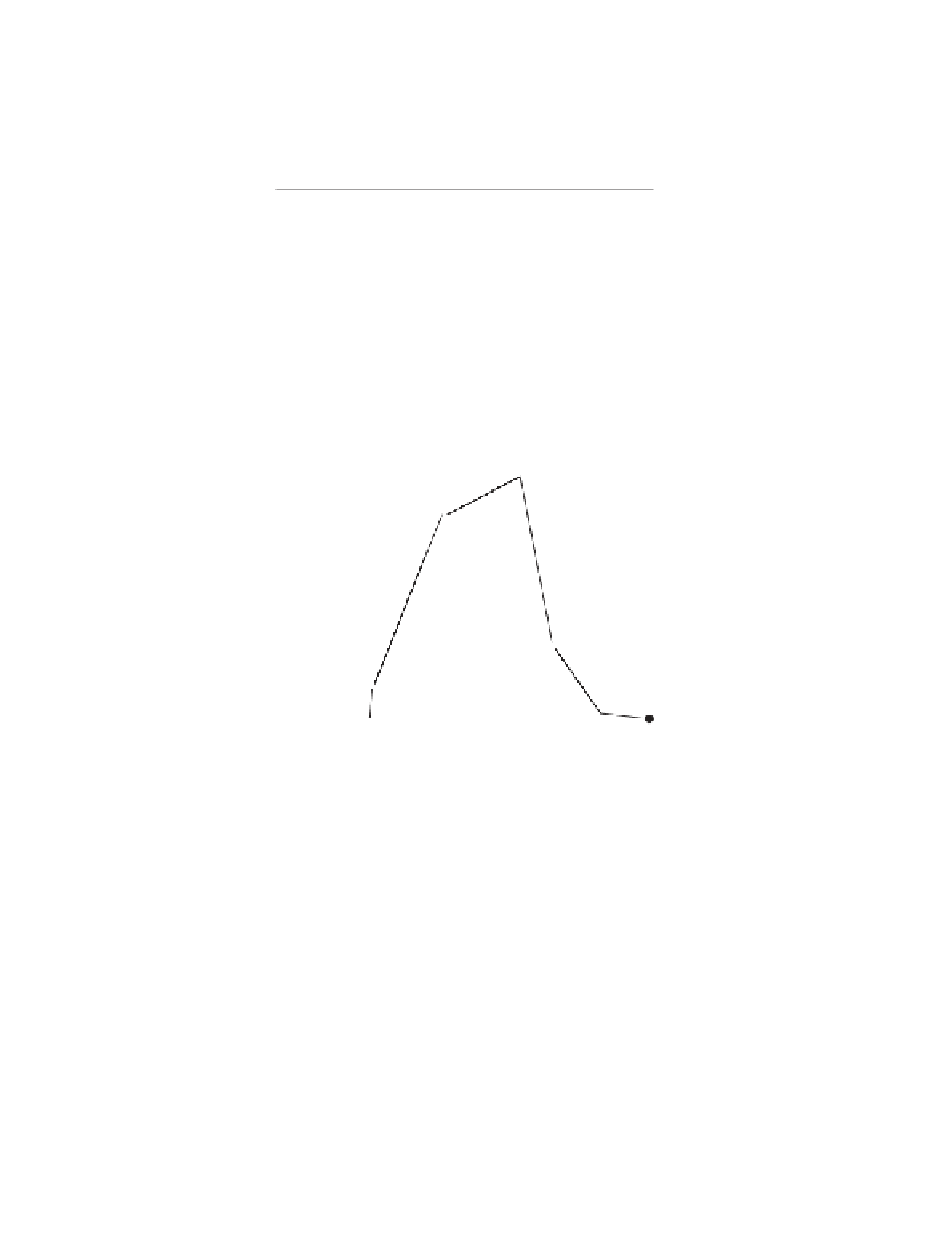Biomedical Engineering Reference
In-Depth Information
HYDROPHILIC POLYSACCHARIDE
WATER
OIL
HYDROPHOBIC AMINO ACIDS
FIGURE 7.12
Schematic illustration of the structure of the arabinogalacto-protein complex
at the oil-water interface. (From Zosim, Z., Gutnick, D. L., and Rosenberg, E.,
Colloid Polymer
Sci.,
265, 442, 1987. With permission.)
60
50
40
30
20
10
0
5
10
15 20 25
FIGURE 7.13
Emulsifying activity (U/mg) as a function of percentage of protein in gum
arabic. (From Zosim, Z., Gutnick, D. L., and Rosenberg, E.,
Colloid Polymer Sci.,
265, 442,
1987. With permission.)
linked to the amino-sugar backbone of the anionic polysaccharide. Its surface activity
is no more than moderate,
194
but it exhibits good stabilizing ability for emulsion
droplets due to the formation of films that are thick (
2 nm) and (presumably)
viscoelastic. More importantly, however, emulsan is known to exist as a complex of
lipohetero-polysaccharide (apoemulsan) and protein. Apoemulsan, or emulsan
treated with proteolytic enzymes, has little surface activity and emulsifying capacity.
The latter is optimized in emulsan samples containing 5 to 15% protein, which can
be produced by mixing protein-rich and deproteinized preparations together.
193
The
synergistic effect can only be explained in terms of the protein moiety lowering
interfacial tension and the contribution of polysaccharide component to the stability
≥

















Search WWH ::

Custom Search